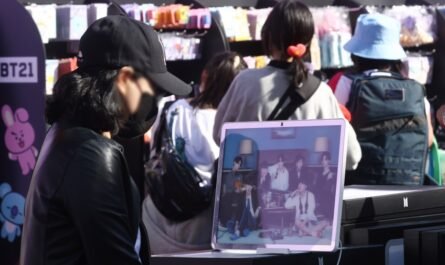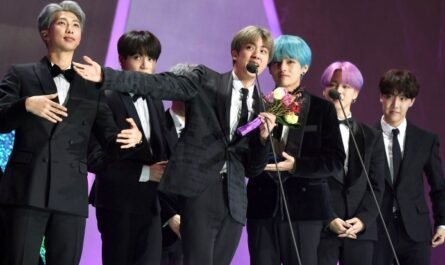The localization method of K-pop targeting the global market is changing with the times.
K-pop has become a genre beyond Hallyu. BTS’ single ‘Butter,’ released in June, has been at the top of the US Billboard’s main chart ‘Hot 100’ for 11 weeks. BTS is showing off the potential of K-Pop after winning the top spot for ten weeks in a row with the previously released ‘Permission to Dance.’
As K-pop received attention on the overseas stage, each entertainment is looking for ways to advance overseas. K-pop groups that focus on the overseas market rather than the domestic market are also notable.
Through the audition program ‘Nizi Project’ jointly planned with JYP Entertainment (after this referred to as JYP) and Sony Music Japan, the nine-member girl group NiziU was introduced. After 29 days of the debut, Niju has been successful, including entering Japan’s representative year-end unique program ‘Red and White Song Contest, winning three ‘Japan Gold Disc Awards, and selecting a model for Coca-Cola in Japan. Thanks to this, JYP is planning Season 2 of the ‘Nizi Project’ for a new boy group in Japan.
SM Entertainment (after this referred to as SM) launched the Chinese boy group WayV. All of the members were trainees who made their faces known as SM Rookies, and they are NCT’s Chinese unit group. The first mini-album ‘Take Off’ ranked first on the iTunes Comprehensive Album Chart in 30 regions worldwide, setting the record for the most in the history of a Chinese male idol group.
Thanks to the success of the Chinese localization group, SM also foretold collaboration with an American broadcasting station. In May, SM announced that it would launch an audition program with American producer Mark Burnett and large production company MGM Worldwide Television (MGM). This is an audition for NCT-Hollywood, which will be active in the global music market.
In addition, Hive established a joint venture (JV) with Universal Music Group (UMG) and announced a global audition. Based on the experience that made BTS an international artist, he said he plans to directly lead the critical challenge of transplanting the K-pop business model to the US market, from cultivating new talent to marketing.
Producer Lee Soo-man described the current localization of K-pop groups as the 3rd stage of the Korean Wave. In the past, artists who made their debut in Korea went overseas. Still now, domestic entertainment is working with foreign capital to form a K-pop group active in overseas markets. It is to create a localized team using the training method that domestic entertainment has accumulated over the years.
The first stage of Hallyu, mentioned by Lee Soo-man, refers to the advancement of Korean artists abroad. HOT, which succeeded in the box office in China, was first coined ‘Korean Wave.’ It opened the way for Korean singers to enter the Chinese market by mobilizing 10,000 spectators for concerts held in China.
BoA, who became the first Korean to top the Oricon weekly chart in Japan, has earned ‘Asia Star.’ At that time, SM invested 3 billion won in training BoA under ‘Mystery Project.’ From the training process, SM focused on Japanese language lessons as well as singing and dancing. BoA, who has established a position as the first generation of Hallyu in Japan, is preparing to debut in the United States one after another. Boa became the first Korean singer to enter the US Billboard main chart with SM’s localization strategy. After debuting in Korea, the first stage is characterized by debuting on the overseas stage through lyrics translation.
The second stage of the Hallyu wave targeted overseas markets by including overseas members. Examples include Super Junior’s Hankyung, f(x)’s Victoria, Amber, and EXO-M. In the early to mid-2000s, when stars were more important than content, overseas markets were secured just by having members from overseas. At this time, most of the K-pop groups included members from overseas.
In particular, EXO debuted in K and M. EXO-K, who debuted in Korea, and EXO-M, who debuted in China, each promoted their activities with an asymmetrical worldview. In EXO-M, Korean members Xiumin and Chen and Chinese members Chris, Luhan, Lay, and Tao belonged. The two groups worked as separate groups rather than as a unit, but with the departure of foreign members Luhan and Chris, Lay’s only Chinese members left at the moment. They are promoting under the name of EXO without distinguishing between K and M groups.
At that time, the localization strategy was pointed out as a significant problem with the withdrawal of overseas members. They mostly gave up their stay with the team when they returned to their home country after doing group activities.











